Introduction
Highway driving is integral to rural health care. Healthcare professionals, first responders, volunteers, and clients must all contend with variable road and weather conditions in providing and seeking medical attention. Community outsiders, such as travelers and students undertaking rural healthcare practica, are especially vulnerable to unfamiliar back roads and hazards known only to the locals. Beyond these risks are stressors encountered by every driver – time, expense, fatigue – which can amount to a considerable burden for those engaged in regular, long distance travel, such as students and rural community care nurses.
Travel safety culture is thus an ongoing issue for rural healthcare sites but, as with many aspects of rural, frontline care, its specifics are often subsumed into the categories of common sense and tacit, local knowledge, rarely reaching the level of policy. This disconnect between frontline experience and official procedures has considerable implications, particularly for visitors and practitioners new to the community, but also for established nurses who take risks and burdens in stride, instead of advocating for better support. Such silence is borne not out of complacency but rather out of the fatalistic assumption – also deeply etched into rural health care – that these concerns inevitably fall on deaf ears.
In this article, the authors present findings from a unique, ongoing research study, ‘Challenges and opportunities in rural preceptorship: from digital images to digital narratives’; the data informing this article were collected by the initial cohort of participants, over 10 weeks, between February and April 2016. This project began with a Photovoice data-gathering phase and yielded a series of digital stories, authored with the input of participating nurses and their students, whose photographs and voices made for powerful, message-driven research output. Photovoice and collaborative, thematic analysis served to elicit tacit knowledge with regard to road hazards and the measures participants took to address them. These findings, in turn, have implications for best practices in rural travel safety and the protection of those individuals most at risk.
It is well established that rural nursing entails autonomous practice and extemporaneous frontline measures beyond the scope of policy1,2, especially in the face of extenuating circumstances such as severe storms. Rural nurses may risk travel in extreme weather conditions such as major snowfall, rain or wind, or work for extended periods with no relief because of unsafe travel conditions for others3. In the past, Canadian nurses’ occupational health and safety (which encompasses work-related travel) has been a site of contention between regulatory bodies and organized labour, centering on frontline nurses’ rights to refuse to work under unsafe conditions4.
Additional burdens may arise from the expenses of road safety training, fuel, personal vehicle maintenance, variable global positioning system (GPS) data, and mobile data3,5. Work-related mileage alone can amount to several thousand dollars’ worth of annual depreciation with regard to a community health worker’s vehicle5. Adverse road conditions can also result in lost income by barring contact between healthcare providers and their clients6,7.
Driving can be a vital aspect of rural health education. Many urban-based students opt for daily travel to their rural preceptorship sites, especially in the absence of local accommodation. Home care visits may entail several hours a week on the road accompanying one’s preceptor, if the preceptor is comfortable traveling with the student, representing a key opportunity to share knowledge and build rapport outside the healthcare setting. Severe weather events can therefore jeopardize students’ learning, to say nothing of their personal safety8.
Healthcare policymakers tend to focus on climate change and predictable, seasonal weather patterns rather than on planning for the vagaries of localized weather events3,7, leaving those in rural healthcare agencies to cope with the unexpected on their own. The nurses located at these sites, accustomed to being marginalized by centralized health authorities9, have thus become inured to road travel, rarely pausing to consider the risks and burdens they face on a daily basis3.
Methods
Aims
The researchers sought to answer the overarching research question, ‘What are the opportunities and challenges of a rural nursing preceptorship?’ through participatory action and collaborative, qualitative analysis. By using this particular method of participatory action research, the researchers sought to empower participants through the research process and outcomes, and to explore how technology mediates and constructs the experiences of these participants. One ancillary research question to arise from the data was, ‘How do rural nurses and their students define and cope with the risks and burdens of rural road travel?’ This article is an exploration of findings pertaining to this question.
Design
Collaborative data collection and analysis were carried out using Photovoice, a participatory action research methodology rooted in Freirean critical pedagogy and feminist theory. Photovoice places the means of constructing reality literally in the hands of those who live it by enabling them to capture their lived experiences through photography and subsequently use those photographs as a basis for elucidating and articulating the issues that matter most to them10. Researchers act as democratic partners and facilitators in this process, using discussion prompts such as the SHOWeD mnemonic (what do we See here; what is really Happening here; how does this relate to Our lives; Why does this concern, situation or strength exist; how can we become Empowered through our new understanding; what can we Do)11. The end products of Photovoice – such as photo albums, exhibits and more recently online slideshows and digital stories – are intended to spur awareness and action beyond what can be achieved through traditional, scholarly research output10.
The researchers designed the study with the aim of actively engaging participants in all phases of the research: input, analysis, and output. Data collection comprised interviews with participants, either one-to-one with the researcher, or with a unit manager also in attendance. Using digital cameras supplied by the researchers, participants photographed their daily routines and chose photos for inclusion in the dataset. They were asked to describe how these photographs represented the research question, thus providing context for the images collected. Thematic analysis proceeded according to categories determined and validated by participants. On the basis of the findings, one digital story was authored by a participant and two by the researchers. It has been found, with specific regard to weather and travel safety, that qualitative inquiry and post-structural analysis are extremely effective research modalities for uncovering and elucidating the tacit knowledge of healthcare workers3,7.
Participants
Participants were recruited through purposive and snowball sampling. In collaboration with a nursing faculty coordinator at a large post-secondary institution in western Canada, the researchers recruited seven female baccalaureate nursing students: six planned to undertake their final, fourth year practica in rural, acute care agencies, and the seventh in a rural, community healthcare setting. Upon obtaining informed consent from these students, the researchers recruited five of their nurse preceptors (two additional preceptors did not take part because of onsite administrative restrictions). These registered nurses (RNs), four female and one male, had 7–28 years of practice experience. All of the nurses had previously precepted students. The seven placement sites were between 42 km and 416 km distant from the students’ formal place of study, in communities of 800–18 000 people. The smallest healthcare site contained 10 beds, the largest 76.
The principal investigator oriented students individually on campus, upon obtaining their informed consent, then traveled to each rural setting to orient the preceptors and other staff members. These orientations consisted of digital camera operation, photographic techniques and, most importantly, photographic ethics and power dynamics. The participants were informed that none of their photographs would be digitally altered for publication. All participants (n=12) were requested to keep in mind the overall research question, ‘What are the opportunities and challenges of a rural nursing preceptorship?’, but otherwise encouraged to photograph any aspects of the healthcare setting, community and surrounding countryside they felt were pertinent. The only caveat was to obtain a signed photographic release and consent form from any individual appearing as a photographic subject, and to avoid photographing patients’ faces.
Data collection and analysis
Data collection took place in two stages: 5 weeks’ acclimation and general photographic coverage of the setting, followed by 5 weeks of narrowed photographic focus on issues and themes emerging from the data. Each stage concluded with onsite discussions facilitated by one or two researchers, wherein the participants supplied commentary and context for their photos. Eleven of these discussions took place, each lasting 45–90 minutes. On six occasions, both the student and preceptor took part in the discussion, on four occasions only the student took part, and on one occasion only the preceptor took part. At three sites, follow-up interviews were not possible because of scheduling difficulties. All discussions were recorded and transcribed for inclusion in the dataset.
Thematic analysis began with the participants themselves, who self-selected photographs best representing their experiences, contextualized their selections through narration, and codified their observations variously as challenges, opportunities, or other categories during discussion, as per the analytical paradigm established by the originators of Photovoice10. To this foundational analysis the researchers applied an iterative coding process involving deduction, coding the entire dataset according to categories suggested by participants; and induction, the generation of further categories through open coding12. Finally, the researchers developed themes to account for these categories, and tested these themes against the entire dataset. These themes became the basis for the research findings, and the organizing principle for the digital stories that anchored the research output. The researchers used Google Docs as a means of collaboratively refining and focusing categories and themes over several weeks.
Validation
Thematic analysis is validated through the corroboration and legitimation of findings12. To this end, the project findings were summarized in a PowerPoint slideshow and presented to individual participants after completion of data analysis. Having completed their final practica, the students were focused on their licensure examinations and post-graduation travel plans, while their preceptors turned their attention back to their full time nursing duties. As a result, validation was limited to 5 of the 12 participants.
Through the validation sessions and digital stories, participants confirmed or elaborated on their initial remarks (internal replication) and corroborated the remarks of their counterparts at other sites (external replication). The researchers thereby triangulated the findings across multiple sites.
Ethics approval
Prior to commencing the research, the researchers obtained approval from the University of Alberta Research Ethics Office (approval number Pro00060664). Both provincial health authorities granted operational approval for data collection in their jurisdictions, and local site managers consented to onsite participation by their staff and students. Every individual collecting data, and/or represented within the dataset, provided signed, informed consent for the inclusion of their data. Furthermore, all participants were apprised of the potential risks and benefits of the project – as well as their right to withdraw at any point – prior to data collection.
Results
Photovoice data collection yielded 442 participant photographs and 11 hours of participant commentary, while thematic analysis produced seven categories of findings, wherein roads and weather were particularly prominent. Only the digital storytelling (DS) phase did not unfold according to design, as only one participant took part in scripting, storyboarding, and narrating. Nonetheless, the researchers carried out the DS phase using participants’ photographs and recorded interview commentary, and participant feedback on the four completed DSs13 suggests they are a suitable and representative centerpiece for the project output.
The core variable (or central finding) of the study was that rural preceptorships teach nursing students to accept and manage limitations, while recognizing and capitalizing on opportunities. Road safety culture was a powerful case in point: as outsiders to the rural healthcare setting, students were troubled by the manifest lack of policy and administrative support regarding road travel for healthcare workers. Over time, they learned how their preceptors and other community insiders mitigated risks and coped with stressors, and how frontline travel safety culture reflected both personal initiative and community ethos.
‘Without GPS I would be doomed’
Initially, most students were quick to extol the pleasures of country driving. ‘That’s one of the bonuses when you drive back and forth’, said one student. ‘It’s kind of like unwinding or relaxing before you get [to the hospital]’. One of her classmates remarked, ‘On my way there I just liked enjoying the scenery’. As the dataset grew to saturation and the practicum progressed, however, it became clear the students felt the strain of highway travel much more than their preceptors. Perhaps not surprisingly, the pressure was chiefly financial. One student remarked, indicating a pair of photos (Fig1,2):
That was my odometer before I started the trip and then I took a picture at the end, just to show how far away from home I actually am.
For a variety of reasons – existing lease agreements, relationships, and other commitments in the city – daily travel to the rural preceptorship site was necessary for three of the seven students. The stressors of time and mileage were compounded by the volatile price of fuel: one student reported prices varying by as much as C$0.40 per litre, over the 10 weeks of her preceptorship, between the city and her rural preceptorship site (Fig3).
Alertness was another concern for students, based on safety and performance. Most students relied on energy drinks and coffee as stimulants (Fig4) to make it through the day, knowing full well that such measures represented diminishing returns over time, both for productivity and personal wellbeing. Their preceptors could only look on sympathetically. ‘I can imagine [the students] would need … coffee multiple times a day’, remarked one preceptor. More worrisome still was the risk to students and novice nurses, lacking both highway driving experience and the power to assert their rights, who felt compelled to attend their rotations despite unsafe road conditions. (Data collection took place between February and April, when prairie winter weather is typically at its most unpredictable.) One preceptor recounted a close call early in her own career:
All of a sudden, my truck went sideways down the highway, and then straightened out and kept going … I should have turned back at that point … but I didn’t know what my rights were on that day, and I was new enough that I didn’t wanna get myself in trouble.
The participants documented this hazard with pictures of unplowed routes and icy hills (Fig5,6).
Students also fretted over unmarked and unfamiliar country roads, especially in the wintertime, when losing one’s way might lead to genuine peril. One student acknowledged:
It would be a disaster, because I’m not even familiar with the area. [If] I couldn’t use my GPS to get there, I would be [out of luck].
GPS units and cellular data plans were the students’ responsibility, as was their ultimate wellbeing. ‘We have to be our own safety’, remarked one preceptor, ‘but yeah, I think there’s potential for harm in rural preceptorship’.
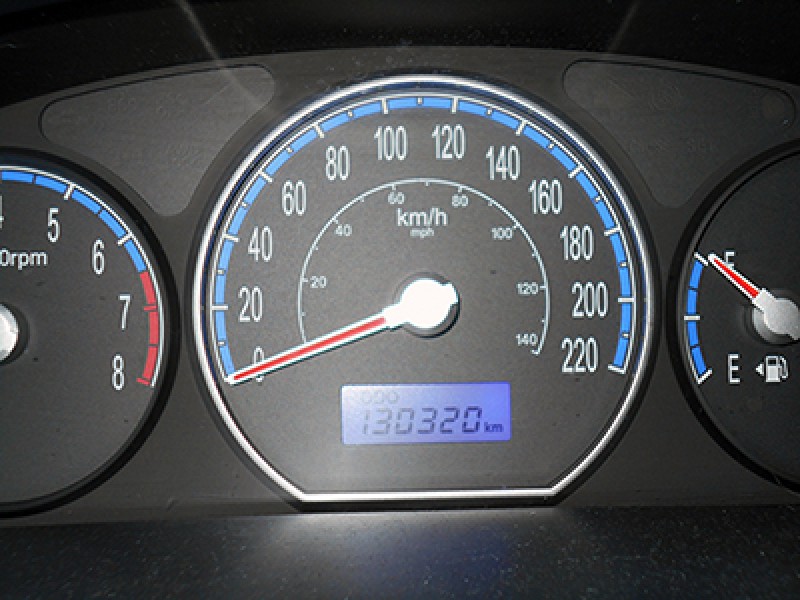
 Figures 1 and 2: A student’s odometer before and after traveling to her placement site.
Figures 1 and 2: A student’s odometer before and after traveling to her placement site.
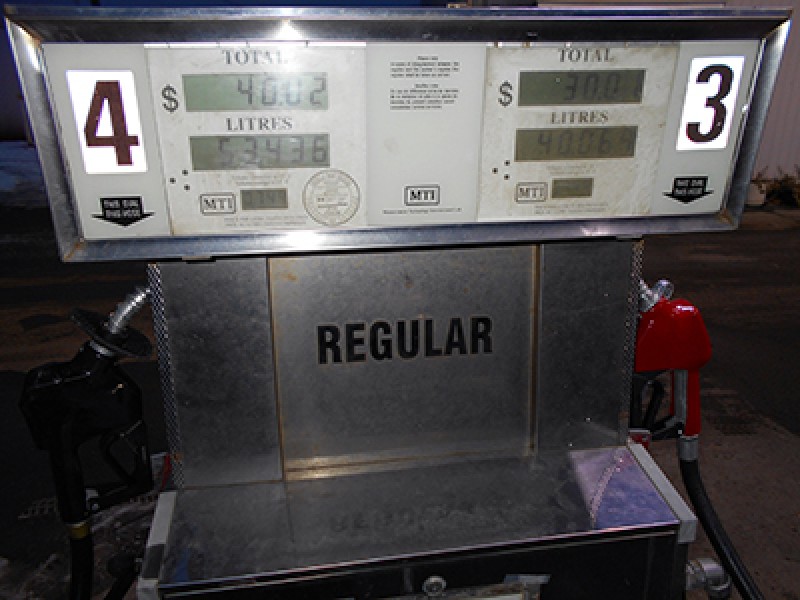 Figure 3: A rural gasoline pump.
Figure 3: A rural gasoline pump.
 Figure 4: Stimulants needed by students on the road.
Figure 4: Stimulants needed by students on the road.
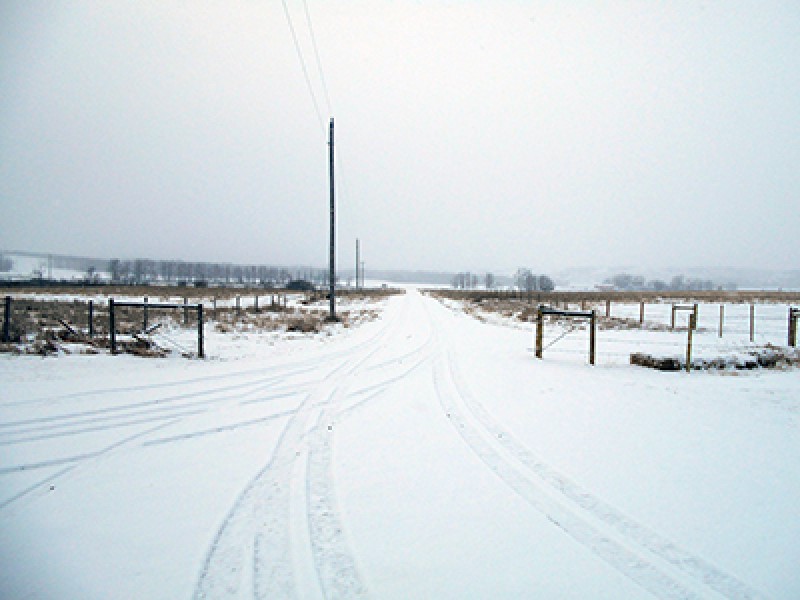
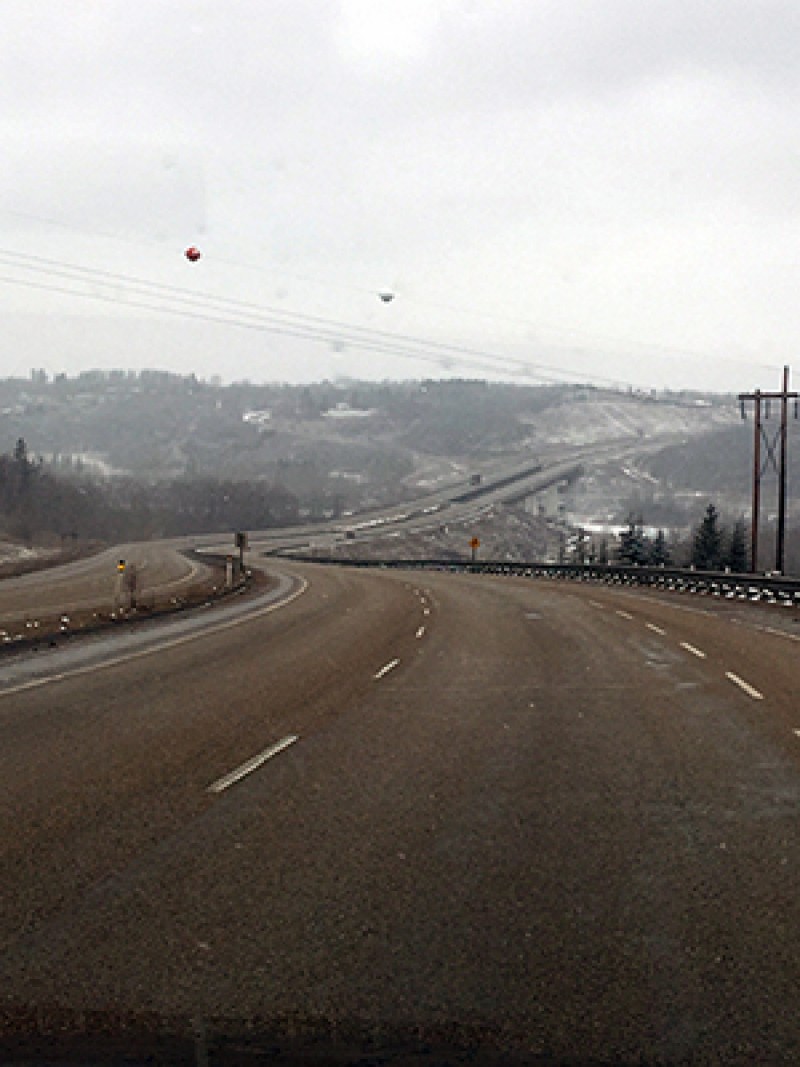 Figures 5 and 6: Unplowed and icy roads in rural western Canada.
Figures 5 and 6: Unplowed and icy roads in rural western Canada.
‘Our normal out here’
The nurse preceptors and other hospital staff regarded road travel as just another quotidian aspect of rural life to be accepted and managed. Their self-assuredness was bolstered by familiarity with the countryside and its weather patterns, but also by years of practice experience whereby they knew their rights. On preceptor explained:
If we’re at risk by going out to do a visit, we can defer that visit until it becomes safe for us to do so … it comes down to personal nurse judgment’. There’s [health authority] policy but again, it’s all obscure … by union rules we can refuse to do work in areas that aren’t safe for us.
Unlike students and novices, experienced nurses were secure in the knowledge they could exercise their judgment without reprisals from administrators or the health authority. Nonetheless, these nurses routinely drove long distances and braved dubious road conditions. One preceptor pointed out: 'five out of seven of us commuted to work this morning, on icy roads.' In the words of another nurse distance driving is:
… our normal out here; we have to drive everywhere, to [the closest city, 184 km away]. You drive there to go shopping, to get groceries.
To illustrate this point, her student supplied a picture of the local main street (Fig7), devoid of the supermarkets and retail outlets that characterize every urban landscape. Long distances and hazardous conditions were simply part of the daily routine.
The two centralized health authorities involved in the study were notably silent on road safety for rural nurses, with one exception: a policy forbidding the use of mobile phones while driving (already prohibited by provincial law). For the nurse preceptors, travel safety precautions were instead a matter of personal discretion and community insider experience, rarely given a second thought. One preceptor described how her safety measures reflected more on her rural upbringing, rather than any official policy:
If there’s lots of snow out and about, I’ll throw my winter boots in the back, in case I’m on the side of the road; I can crawl back and get them if we have to get out somewhere. I keep an extra hat and pair of mittens in my vehicle, too. That’s my mom, always talking … We had to shovel our way out of our settlement a few times, on the way to sports games on the weekend, after a snowstorm; we’d get stuck in a snow drift and we’d all get out and shovel; so she always had a shovel in her vehicle.
It is fitting that, in the context of rural preceptorship, this nurse acknowledged that much of her road safety wisdom came to her from her mother. In teaching her student about road safety, the nurse was taking a similarly protective, kinship-like stance, passing along community insider wisdom and making her student feel safe, rather than merely imparting procedural knowledge and skills. She went on to point out that road trips to clients’ homes accounted for a considerable portion of their time together, not least because the health authority had greatly expanded her home care service areas: ‘Sometimes we can be in our car for what feels like more [time] than we’re actually doing client service’.
One image stood out as emblematic of the nurses’ reliance on community ethos, in the absence or breakdown of official measures, for road and weather safety: an emergency weather radio, sitting powered off on the windowsill in the office (Fig8). A preceptor explained:
All of the health centers have one of these radios, [but] it’s off because we don’t get reception.
For the hospital staff, the useless radio exemplified the sometimes absurd policies of a centralized health authority, disconnected from rural frontline reality. ‘If there’s something that we need to know about, we depend on the other health centers to let us know, or the hospital’, said the same nurse with a shrug. Word of mouth – for generations, the only news source and public alert system available in the countryside – suited her and her colleagues well enough.
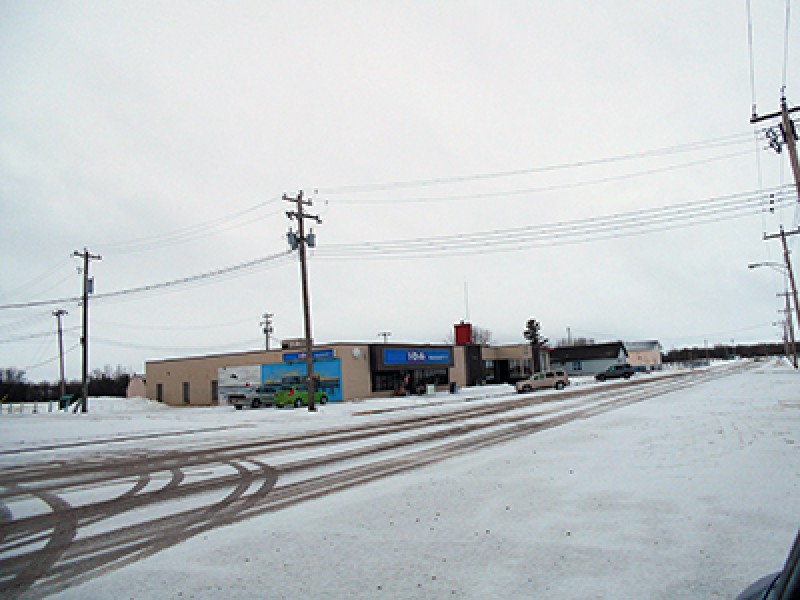 Figure 7: A small-town main street.
Figure 7: A small-town main street.
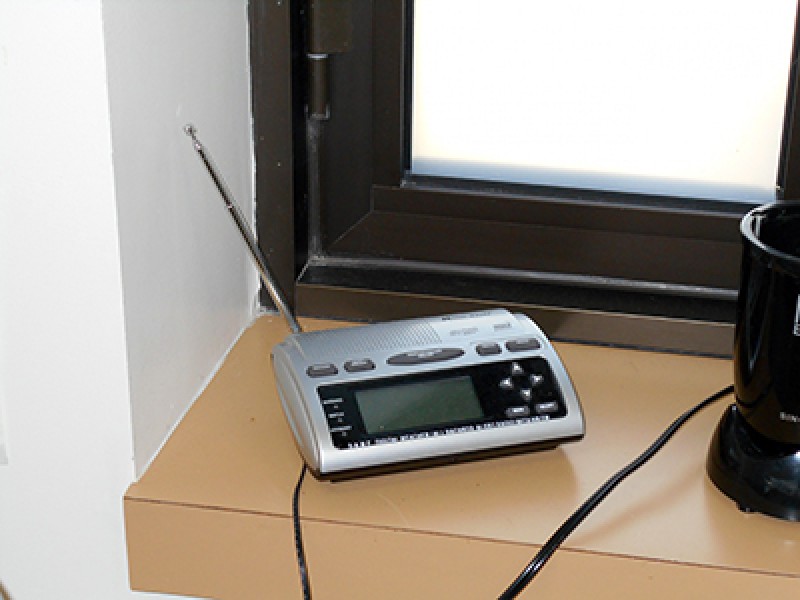 Figure 8: An emergency weather radio with no reception.
Figure 8: An emergency weather radio with no reception.
Discussion
The nurse preceptors’ reliance on the community grapevine, and other safety measures passed on from one generation to the next, typifies the classic contrast of community and society14 at play in any rural healthcare setting. Rural nurses are professionally bound by procedures and policies defined by society (eg a corporate entity such as a health authority), but they are also driven by competing values of community (eg kinship and fellowship, mutuality and reciprocity). Zawaduk observes that nursing students undertaking rural practica are prone to cultural dissonance as they negotiate this clash of values for the first time15. Witnessing their preceptors and other rural staff place their faith in word of mouth and other seemingly informal precautions was initially disconcerting for students, as indeed it was for the researchers. Nevertheless, learning to trust community-based knowledge and experience, where policy fell short, was a vital part of the students’ education and their future protection.
In judging for themselves whether or not to travel, and what precautions to take, the preceptors role modeled rural autonomy and resourcefulness1,2 for their students. From the standpoint of occupational health and safety, this finding speaks to the role of organized labour in protecting a frontline nurse’s prerogative to assess a situation and to refuse unsafe work4. The preceptors and their colleagues took travel risks on their own terms – not those of the health authority –in contrast to the findings of other studies3,5. This autonomy may reflect varying degrees of union power from province to province, and it should be noted that occupational health and safety remains an understudied area of rural health care6.
More pertinent to nursing education, the above-described role modeling illustrates how experience-based wisdom is passed on informally from veteran rural nurses to new ones. The preceptor who narrowly avoided a serious road accident, because she ‘did not know her rights’ as a novice nurse, was scrupulous in ensuring her student would be better informed. The preceptor who packed ‘an extra hat and pair of mittens’ on home visits was simultaneously setting an example for her student, and giving expression to their kinship-like, protective bond8, overlain with the memory of her own rural upbringing. Travel safety culture was a building site for preceptor–student relationships.
However much the preceptors evinced the empowerment of autonomy and self-reliance, it was nonetheless evident they shared the same sense of marginalization found at other rural healthcare sites9. The staff with the useless emergency weather radio saw no point in informing the central health authority, presumably because they expected nothing would be done. The preceptor whose service area boundaries had been expanded to the point where she spent most of her day driving, likewise did little more than grumble about it. Perhaps they did not feel their voices carried significant weight with policymakers9, or they were so accustomed to coping that speaking up did not occur to them3. In response to the researchers’ enquiries, representatives for both health authorities acknowledged that road conditions and local weather events had not yet warranted any official policy, corroborating the findings of previous Canadian studies3,7.
Limitations
With regard to study aims, the potential of digital storytelling to mediate participants’ experiences, and to empower participants as self-advocates, remains partially unexplored, as only one participant opted for the DS phase of the project. Only a small cohort of nursing students chose rural practicum placements in any given semester, which resulted in a modest sample size (n=12). However, the data collection strategy produced a rich, qualitative dataset and elicited tacit knowledge regarding travel safety culture, strengthening the study in comparison to other, more conventional modes of enquiry.
The cohort studied undertook their nursing preceptorship during the winter months, which entail specific hazards detailed herein. While the region studied is vulnerable to other, well-documented severe weather events during the remainder of the year – such as floods, wildfires, and supercell storms capable of producing lightning, hail, and tornadoes – these hazards were not experienced by this cohort during the timeframe of the study.
Conclusions
The students, lacking their preceptors’ experience, recourse to collective bargaining, and financial compensation, were more vulnerable to the risks and burdens of rural road travel3,5. In an era of declining health and human resources in rural areas, and a need for recruitment16, this issue is cause for concern. For educators and policymakers alike, the frontline, community-based experiences of rural nurses remain a largely untapped resource in the development and promotion of best practices for road safety. Participatory action research has proven an effective means of drawing these experiences forth and sharpening them into message-centered output. As fewer nurses are called on to serve the increasing healthcare needs of an aging rural client base, it appears inevitable that road travel will play an increasingly crucial part of rural healthcare delivery in acute and community settings. Future generations of caregivers need to be thoroughly prepared for this reality, and to have the support and protection of road safety policies from the outset of preceptorship onwards. Rural nurses have a vital role to play in informing such policies with frontline experience and community insider knowledge.
Recommendations for further study, practice, and education
Further comprehensive, qualitative investigation of travel safety culture in rural hospitals, and rural preceptorships, is necessary to formulate specific policy recommendations. Subsidies for mileage and travel expenses could conceivably pay dividends in rural preceptorship placements and subsequent career choices. Regardless of their chosen practice settings, students should always be protected by the same occupational health and safety measures available to their preceptors, and be apprised of their right to refuse risking their personal safety without academic consequence. Preceptors and faculty coordinators have a direct responsibility in this regard, from the outset of a student placement.
Acknowledgements
The authors would like to acknowledge the work of research assistants Jim Cockell (writing), Kyra Cusveller (coding), Grace Miazga (data management), and Samantha Semler (data management). This study was funded by the Office of the Provost and Vice President (Academic), University of Alberta, Canada.


